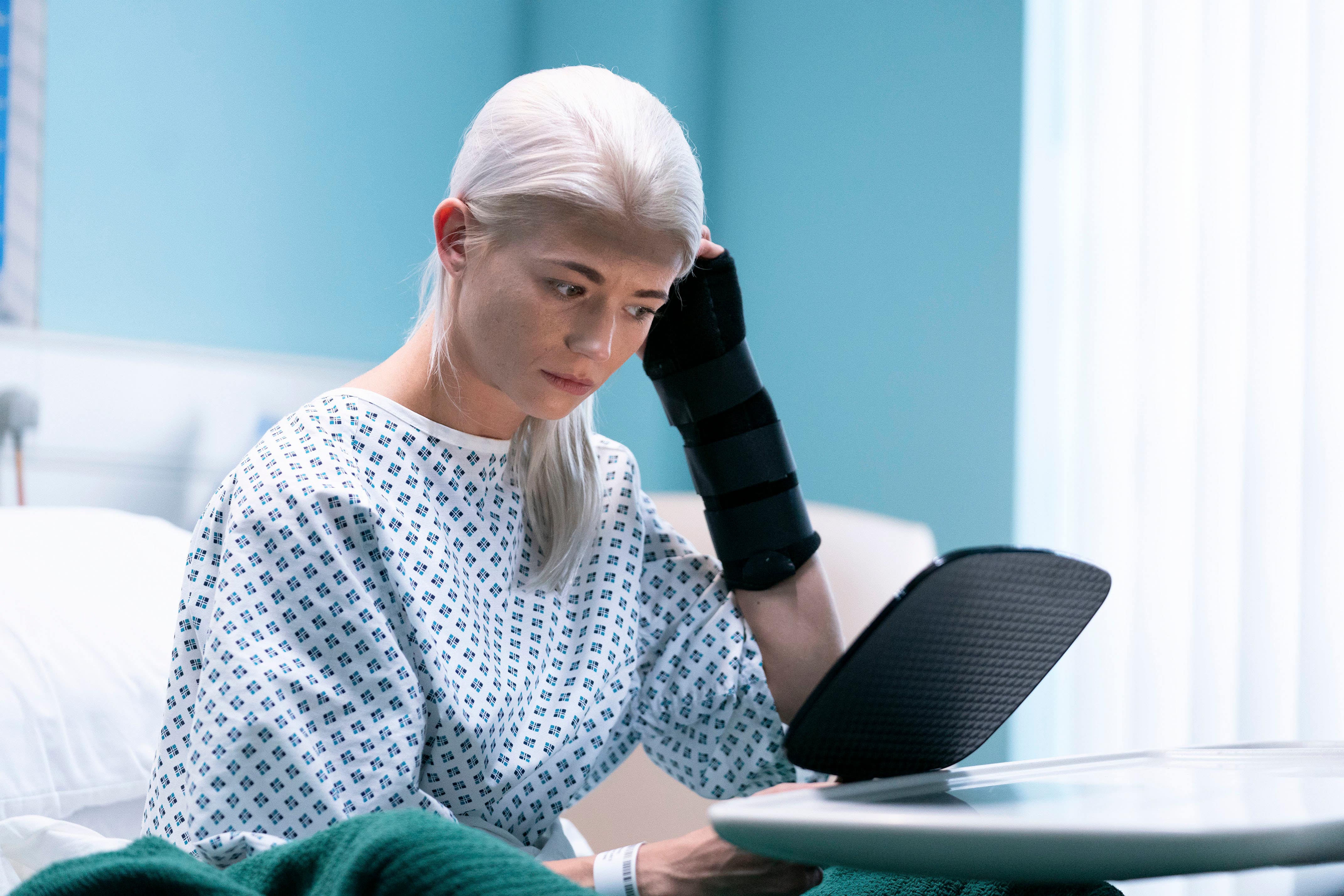As EastEnders’ Lola Pearce is diagnosed with brain cancer, what is a glioblastoma tumour?
The TV soap is working with health charities on the moving storyline. By Katie Wright.

After suffering a seizure in an episode earlier this month, EastEnders’ Lola Pearce has been diagnosed with a brain tumour.
Following tests in hospital, the beautician – played by Danielle Harold, 30 – was told by a doctor: “The MRI confirms what we already thought, that you have a glioblastoma multiforme, which is a fast growing and spreading tumour.”
Initially choosing to only share the devastating diagnosis with partner Jay, Lola later revealed to close family members: “I’m going to go into hospital tonight, they’ll remove the tumour next week and then a bit of chemo if it’s not all gone.”
The BBC One soap is working with charities Brain Tumour Research (braintumourresearch.org) and Macmillan Cancer Support (macmillan.org.uk) to ensure accuracy of the storyline, which centres around a complex and aggressive condition.
So, what is a glioblastoma brain tumour, and are there any signs to look out for? We asked an expert to explain…
What is glioblastoma?
“Glioblastoma (GBM) is one of more than 100 types of brain tumour,” says Dr Karen Noble, director of research, policy and innovation at Brain Tumour Research.
“This is a highly varied tumour type, which contains a mixture of different types of ‘glial’ brain cells, hence the name glioblastoma. GBM very rarely spreads outside of the brain, spine or central nervous system to other parts of the body.”
Classified as a grade 4 tumour (the most severe and fastest-growing grade), a glioblastoma brain tumour is diagnosed by looking at cells under a microscope.
Noble says: “The way the tumour looks on a brain scan can also indicate the type and grade of a tumour, but it is not as reliable as looking at the cells themselves.”
What are the symptoms?
“Symptoms of glioblastoma tend to develop gradually over a period of six weeks or so,” Noble says.
“Patients might present at their GP with seemingly minor complaints – and these can include headaches caused by pressure, seizures, focal symptoms including visual disturbances, problems with balance, or numbness/tingling down one side in the arms or legs.”
There could be other reasons for these symptoms besides a brain tumour, but it is worth speaking to a GP and optometrist if you experience any of them. If your doctor is concerned about the possibility of a tumour, they will refer you to hospital for a scan.
What treatment is available?
“The complex nature of this form of the disease makes it very challenging to treat,” says Noble, which is why a lot of cancer research is focused on glioblastoma tumours.
“There is no cure and treatment options are very limited, with most patients undergoing surgery, depending on the location of the tumour, followed by radiotherapy and chemotherapy.”
The complexity, diversity and rapid growth of glioblastoma tumours also makes it challenging for researchers – but there has been some encouraging news recently, Noble says: “Earlier this year, the Brain Tumour Research Centre of Excellence at Imperial College London announced a significant breakthrough, which could dramatically improve the effectiveness of radiotherapy for GBM patients in the future.”
What is a typical prognosis?
“Brain tumours kill more children and adults under the age of 40 than any other cancer,” Noble says, and the survival rate for glioblastoma is lower than many other cancers.
“Sadly, the average prognosis is devastatingly short, with many patients living for just 12 to 18 months. Just 25% of glioblastoma patients survive for more than a year and just 5% survive more than five years.”